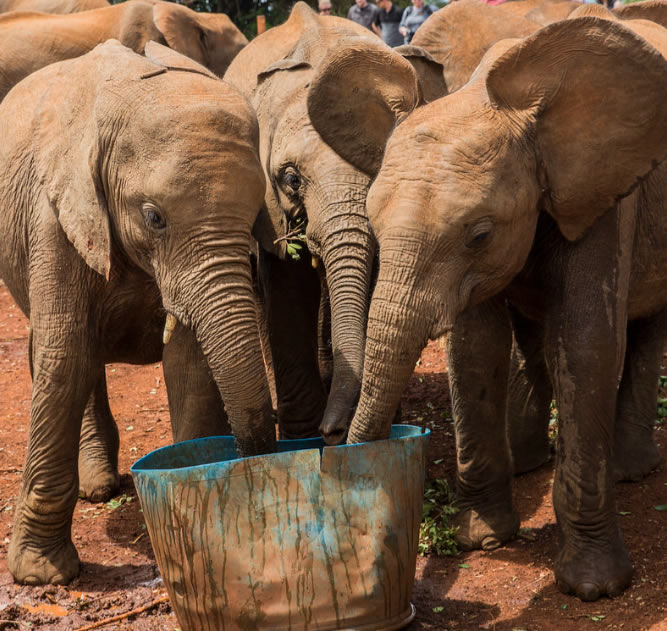
| Days | Day Trip |
|---|---|
| Highlights | Sightseeing Tours, Adventure Tours |
| Transport | Jeep afari / Van |
The Daphne Elephant Orphanage is a heartwarming and unique experience located within Nairobi National Park, Kenya. Officially known as the David Sheldrick Wildlife Trust Elephant Orphanage, this sanctuary is dedicated to the rescue, rehabilitation, and release of orphaned elephants back into the wild. Established by Daphne Sheldrick in 1977, it has become one of the most renowned wildlife conservation efforts in the world, offering visitors the opportunity to interact with the elephants and learn about their care and conservation.
As your safari begins, you’re welcomed by the fresh morning air, the sounds of birds and distant wildlife, and the sight of a vast African landscape stretching before you.
You can visit between 11am and 12 noon every day, and see the elephants being fed and playing. In addition, there is a keeper who will give a talk about the elephants, where they came from, how they are getting on, and how some of the previous orphans are progressing. You can get really close to the elephants. The orphanage also takes in rhinos and so if you are lucky you will get the chance to see a young rhino Daphne & David Sheldrick Animal Orphanage The David Sheldrick Wildlife Trust is a small flexible charity, established in memory of David Sheldrick, famous Naturalist and founder Warden of Kenya’s giant Tsavo East National Park in which he served from 1948 until 1976.Pick up time 10.30am every Day
PRICE INCLUDES
Transport in a Mini Van with open roof and window seat guaranteed
Transfers, sightseeing, roundtrip and visits as per tour programme
1 liter mineral water per person/day
Entrance fees
Qualified English-speaking local tour guide/driver
PRICE DO NOT INCLUDE
International flight.
Visa for Kenya (about USD 50)
Beverages
Tips
-Nairobi City
June to October and January and February
June to October and December to March
April and May
June to October
March, April and May (Peak of the Wet season)
GROUP OR PRIVATE, 4×4 JEEP SAFARI Ziwa safari Safaris Tour features Days 7 Days 6 Nights Highlights Sightseeing Tours, Adventure Tours, Safari Tours…
GROUP OR PRIVATE, 4×4 JEEP SAFARI Bush to Island Safari Tanzania & Zanzibar Tour features Days 13 Days 12 Nights Highlights Sightseeing Tours,…
GROUP OR PRIVATE, 4×4 JEEP SAFARI Bush to Island Safari Tour features Days 13 Days 2 Nights Highlights Sightseeing Tours, Adventure Tours, Safari…
Trustindex verifies that the original source of the review is Google. Trustindex verifies that the original source of the review is Google. Trustindex verifies that the original source of the review is Google. Trustindex verifies that the original source of the review is Google. Trustindex verifies that the original source of the review is Google. Trustindex verifies that the original source of the review is Google. Trustindex verifies that the original source of the review is Google. Trustindex verifies that the original source of the review is Google. Trustindex verifies that the original source of the review is Google. Trustindex verifies that the original source of the review is Google.
Best Memory Safaris operates on excursions and safaris in East Africa. we also offer tailor made tour programs which specially fit your travel plan, including Mountain trekking,walking safaris and Social project visits. Our Kenyan office is located on the South Coast of Mombasa at Diani Beach and managed by a Team of seasoned professionals. We pride over 15 years experience and international class exposure in safari business.
No WhatsApp Number Found!
WhatsApp us